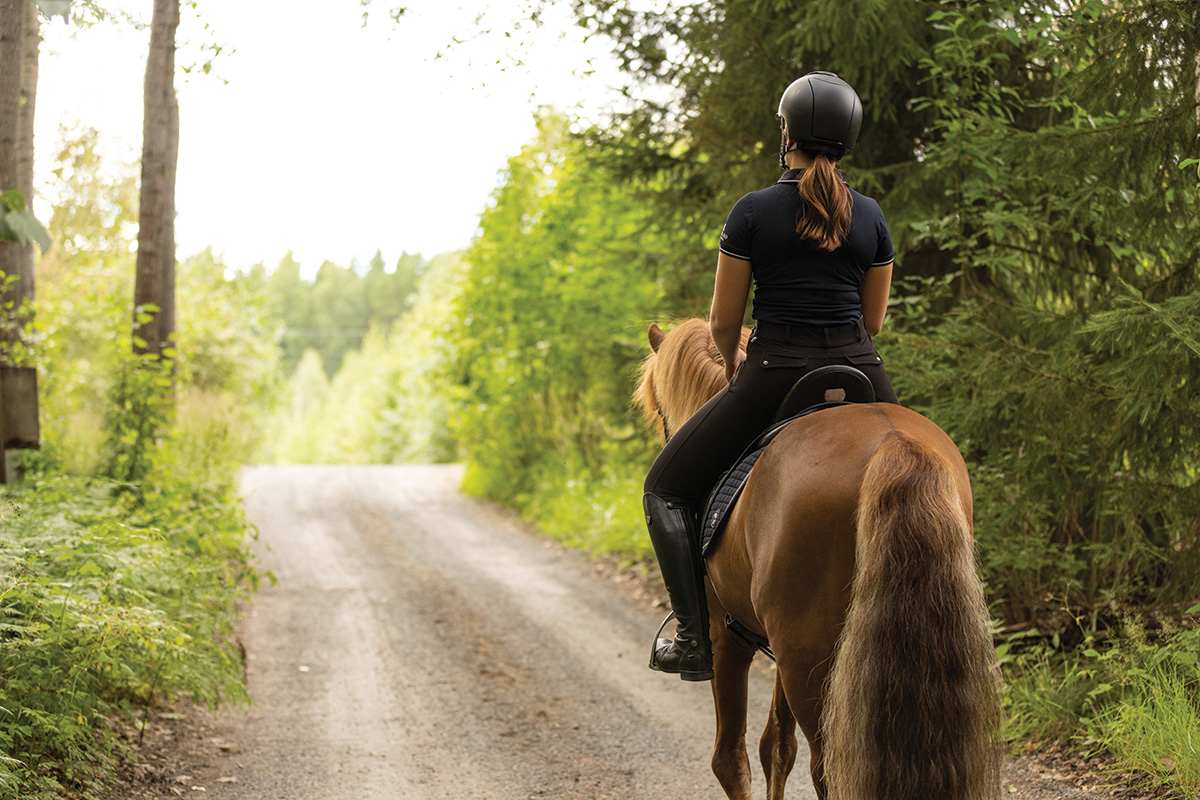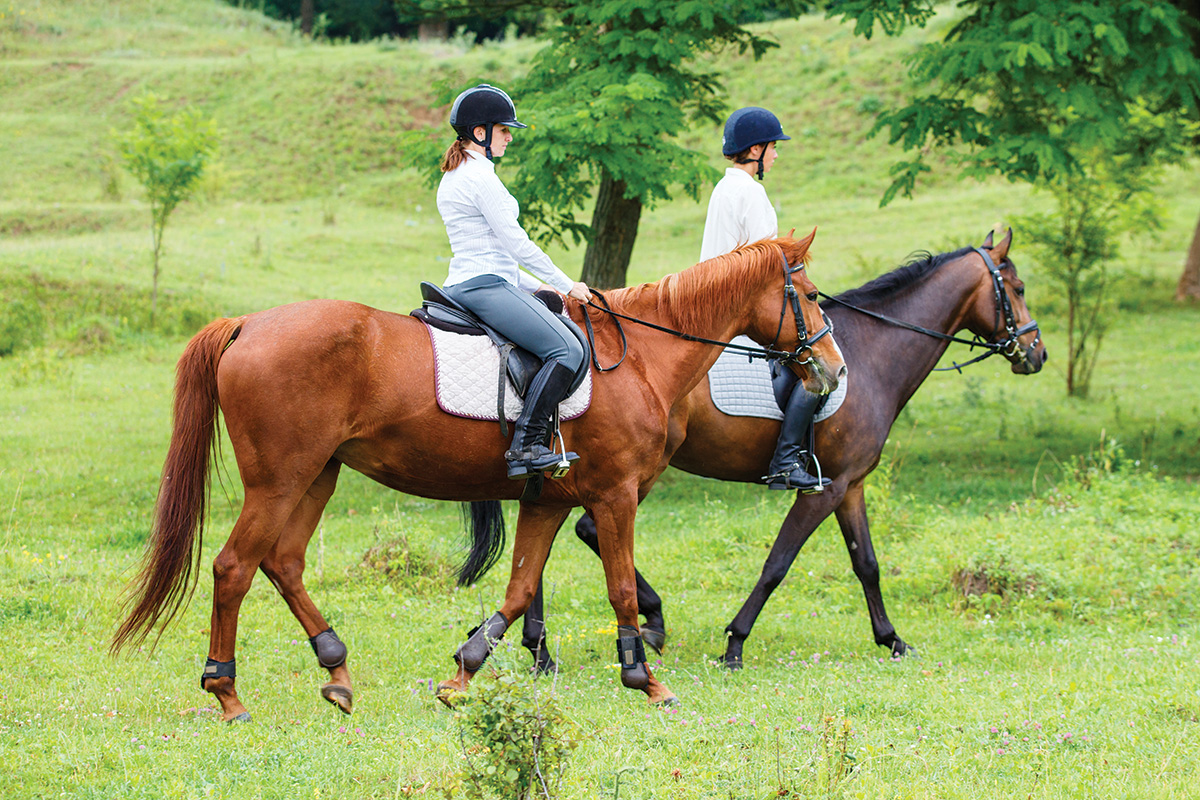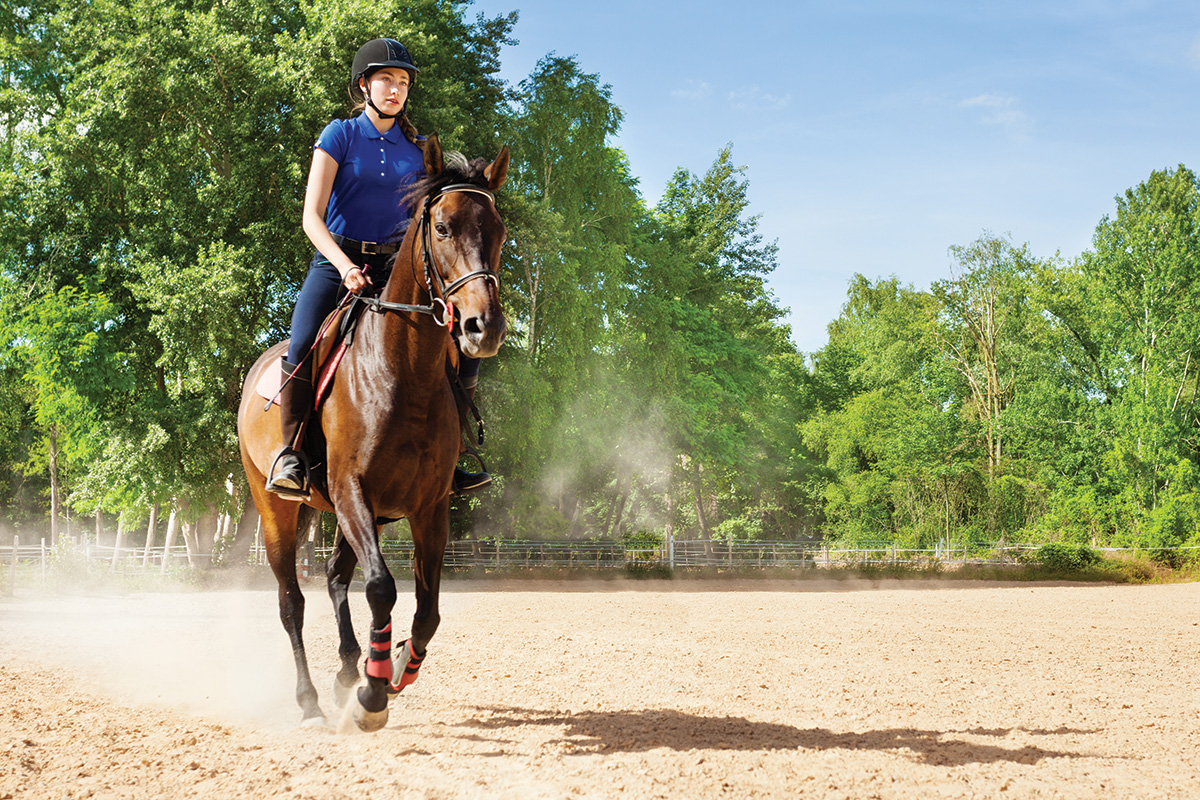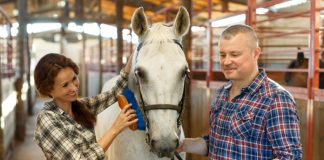Depending on the availability of indoor arenas, lights, and safe footing where you live, riding throughout the winter can be a challenge. But peak show and trail riding months are arriving quickly, so it’s time to put a plan in motion and get prepared for the season ahead. Without a proper base of fitness, both you and your horse will be more prone to injuries that will keep you from those plans you’ve made.
Work on Your Own Fitness
Now is the perfect time to start a fitness program for yourself before you hit full-tilt summer show season. If going to the gym isn’t convenient, consider an online program. There are lots of YouTube videos to help guide you through basic working routines, and several subscription services targeted directly for building rider strength out of the saddle.
If prefer to get your exercise outdoors, the barn property can become a gym. Map out a path around the perimeter of the fields, or even just up and down the driveway, to go for a walk or a jog. Hills are ideal because they maximize the cardio challenge, build muscles and burn more calories.

There’s also plenty you can do in the barn to build fitness. If you board, ask your barn manager if you can pitch in to make their day go a little quicker. Carrying and scrubbing water buckets, mucking out some extra stalls, or even just helping bring the horses in and out from the fields will help you build up stamina.
Think about your summer riding plans, too. Is trail riding on your list? You can’t go trail riding if the trails are full of branches and trees that fell over the winter. Get in a full-body workout walking the trails on foot and helping remove anything in your way.
If you board at a facility, team up with some other riders to keep each other accountable. Getting a group to ride together after work or on the weekends can make it more fun. Workout classes are better with a friend, so you may want to join a gym with your barn buddies.
Peer support is trickier if your horses are at home or if you board at a smaller facility. There are plenty of Facebook groups with other riders in the same isolated position also craving support. Groups exist for different breeds, sports, and riding goals. An online community can be just as positive as in-person support to keep you motivated.
Get Your Horse Fit
If you return your horse to full work after two months (or more) of down time, he will have lost significant fitness and be more prone to injury. Although cardiovascualar fitness is relatively easy for horses to achieve, tendons and ligaments take months to strengthen when starting from scratch.
If you have space on your farm to go for low-intensity hacks, that is the perfect place to start, but walking in the ring works, too. You can walk even an unfit horse under saddle for up to 60 minutes per day, four to six days a week. Ride your horse forward and keep him pushing from behind, even at the walk. (Going around in an inverted frame with his back down and head in the air will strengthen the wrong muscles.)

Stick to walking for at least the first two weeks of your program. You can gradually increase the time and/or add hill work to keep things challenging, but always keep a feel for when your horse starts to get tired, and wrap up your ride at the first signs of fatigue.
After two weeks, you can gradually add in a few minutes of trotting. Take walk breaks after 2 or 3 minutes of trotting when you start, then work up to 5 to 10 minutes of trot over the next week as your horse is able. Don’t let your horse fall apart in his downward transitions, and think about him lifting his back and stretching down into your hand during breaks from higher-intensity work.

In week four, you can add 1 to 2 minutes of cantering, building up from there. After 30 days, you can introduce a few small jumps or very short bursts of more intense work as your discipline requires. It’s better to ask for successful smaller amounts of higher-intensity work than less-successful—and potentially detrimental—longer workouts.

After six weeks of consistent work, your horse should be much closer to optimum fitness. Throughout his conditioning period and beyond, continue walking as much as possible each day; this can be done before and after the more intense portion of your ride.
Also pay attention to how you feel during this process. It’s hard to ask your horse to carry you if you are starting to fatigue. If after trotting a couple circles you feel your leg slip and your hands start to bounce, it’s time to go back to the walk.
Getting both you and your horse back into shape in the spring takes time, and rushing only gets you to the wrong place faster. It’s better to take it slow while rebuilding stamina in order to reduce the risk of injury and to keep riding fun for both of you.
This article about horse and rider fitness for spring appeared in the April 2023 issue of Horse Illustrated magazine. Click here to subscribe!





